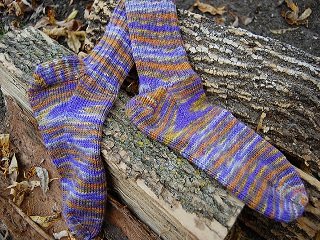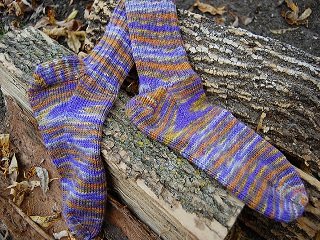 Ask an experienced outdoorsman for advice on what to bring along when you hit the trail and their response will most likely contain a few obvious items, as well as some that are less obvious. One of the most common answers is extra socks. While extra socks are a must as a contingency against unexpected water or cold, they can also serve other purposes in a survival situation. Today, I’ve outlined a few ways socks can be used in the outdoors, other than to warm your feet.
Ask an experienced outdoorsman for advice on what to bring along when you hit the trail and their response will most likely contain a few obvious items, as well as some that are less obvious. One of the most common answers is extra socks. While extra socks are a must as a contingency against unexpected water or cold, they can also serve other purposes in a survival situation. Today, I’ve outlined a few ways socks can be used in the outdoors, other than to warm your feet.
Other than warming feet against the cold earth, an extra pair of socks can obviously be used to warm your hands. Full use of your hands is important, especially if your life is on the line, and warming them in a pair of socks will prevent frostbite and keep your hands reliable.
Water is crucial to surviving the outdoors, and socks can help you eke out a bit of drinking water if you find yourself thirsty. Socks can be used as a filter to remove sediment from river or pond water. It won’t remove bacteria, but if you have access to purification tablets or iodine, removing large sediment from the water will help. Furthermore, you can use a sock to extract water from mud or even thick clay by filling it with either and squeezing the water out of it.
On the other end of the survival spectrum, a sock can be used when hunting small game. If you can get close enough to fish, squirrels, or other wildlife, a sock can be filled with rocks and used as a weapon. Also, once an animal is captured, you can use the sock to safely carry it until it’s time to eat it, especially if it’s something potentially harmful, such as a snake.
If you need to create a makeshift shelter using a blanket or tarp and have access to rope, socks can be filled with dirt or rocks, tied off, and buried to create rudimentary deadmen. These will act as anchors for your shelter and keep the wind from blowing your only source of protection against the elements away.
Lastly, if you find yourself stuck in icy terrain, wool socks can be used to create traction on the slick ice. Wool fibers stick to ice and wool socks can be wrapped around the toe of your boot to improve friction and keep you from slipping.
It’s not a long list or deeply involved list, but the uses listed above are just a few helpful ways that socks can offer more aid when things become serious. Take some time to look them over and remember them the next time you head out for a hiking trip and are trying to decide whether or not to bring that extra pair of socks. Finding room for them just might end up being the decision that saves your life.








